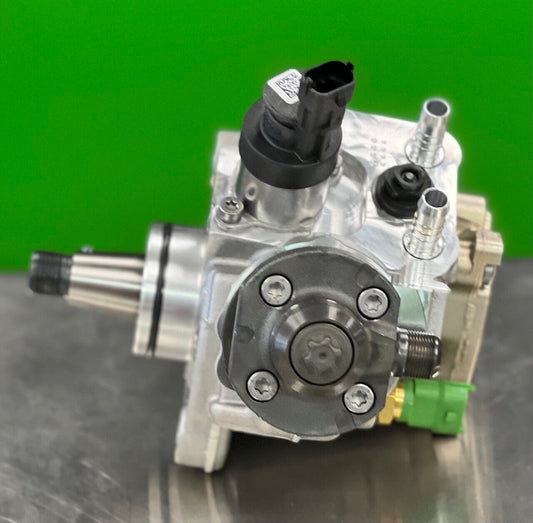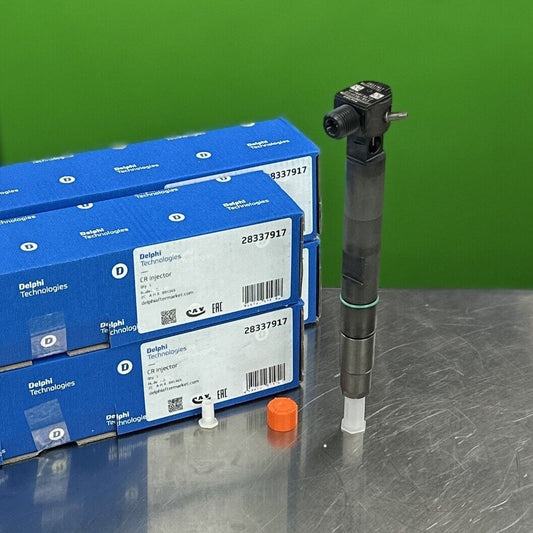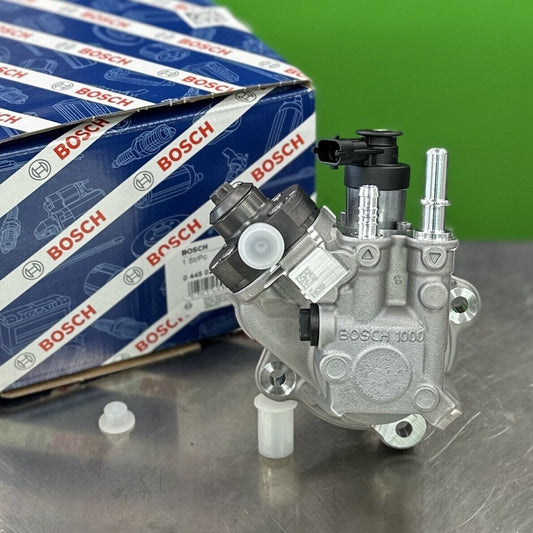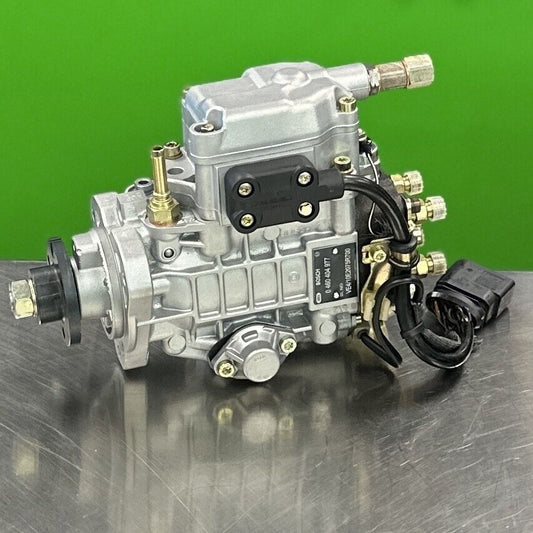Diesel Engine Cooling Systems for Texas Heat
When it comes to diesel engine cooling systems in the scorching heat of Texas, ensuring optimal performance and longevity is crucial. The relentless Texas sun can push machinery to its limits, making efficient cooling systems a necessity rather than a luxury. Without proper cooling, diesel engines can face a meltdown, quite literally.
Understanding how diesel engine cooling works is essential. These systems are designed to regulate the engine's temperature and prevent it from overheating. Key components such as radiators, water pumps, and fans work together to dissipate heat and maintain the engine at an ideal operating temperature.
Hot climates like Texas pose unique challenges to diesel engines. The excessive heat can lead to overheating issues, which not only affect performance but can also cause irreversible damage to the engine components. Imagine running a marathon in a desert without water – that's how diesel engines feel without adequate cooling.
There are two main types of cooling systems for diesel engines: air-cooled and liquid-cooled. While air-cooled systems are simpler and more compact, liquid-cooled systems offer better heat dissipation capabilities, making them more suitable for combating the Texas heat. Choosing the right cooling system is like picking the right gear for a challenging hike – it can make all the difference in reaching the summit.
Maintenance and care play a vital role in ensuring the longevity of diesel engine cooling systems. Regular inspections, fluid checks, and cleaning are essential to prevent breakdowns and ensure efficient operation, especially in hot conditions. It's like giving your car a regular check-up to avoid unexpected breakdowns on a long road trip.
Advancements in cooling technologies have revolutionized how diesel engines combat heat stress. Variable speed fans and smart cooling systems are designed to adapt to changing temperature conditions, providing optimal cooling when needed. These technologies are like having a personal climate control system for your engine, ensuring peak performance even in the Texas heat.
Understanding Diesel Engine Cooling
When it comes to understanding diesel engine cooling, it's essential to grasp the intricate dance of components working together to keep the engine running smoothly. Picture it like a well-orchestrated symphony, with each part playing a crucial role in maintaining the optimal temperature for peak performance. At the heart of this system are components like the radiator, water pump, thermostat, and coolant, all working in harmony to dissipate heat and regulate the engine's temperature.
Imagine driving through the scorching Texas heat, the sun beating down on the engine as it works tirelessly to propel your vehicle forward. In this challenging environment, the cooling system becomes even more critical, ensuring that the engine doesn't overheat and break down. Without proper cooling, the engine's components can warp, leading to costly repairs and potential downtime.
One of the key aspects of diesel engine cooling is the circulation of coolant through the system, absorbing heat from the engine and releasing it through the radiator. This process is vital in preventing the engine from reaching dangerous temperatures, which can cause irreversible damage. Think of the coolant as the engine's lifeline, constantly circulating to maintain the delicate balance of heat dissipation.
As temperatures rise, especially in hot climates like Texas, the cooling system must work harder to keep the engine within the optimal temperature range. This is where the efficiency of the cooling system plays a crucial role, ensuring that the engine can operate at its best even under extreme conditions. Regular maintenance and checks are essential to keep the system running smoothly and prevent any surprises down the road.
Challenges in Hot Climates
Operating diesel engines in hot climates like Texas poses significant challenges that can impact their performance and longevity. The scorching heat can lead to overheating issues, putting excessive strain on the engine components and affecting overall efficiency. The relentless sun beats down on the machinery, testing the limits of the cooling systems designed to keep temperatures in check. Without proper cooling, the engine's performance can suffer, leading to potential breakdowns and costly repairs.
One of the main challenges faced by diesel engines in hot climates is the risk of overheating. When the ambient temperature rises, the engine's cooling system must work harder to dissipate heat and maintain optimal operating temperatures. If the cooling system is not up to the task, the engine can overheat, causing damage to vital components and reducing overall efficiency. This can result in decreased power output, increased fuel consumption, and ultimately, a shorter lifespan for the engine.
Moreover, the high temperatures in hot climates like Texas can also affect the viscosity of the engine oil, impacting its lubricating properties. As the oil thins out in the heat, it becomes less effective at reducing friction between moving parts, leading to increased wear and tear. This can further exacerbate the strain on the engine, potentially causing premature failure if not addressed promptly.
To combat these challenges, diesel engine cooling systems must be robust and efficient, capable of withstanding the extreme conditions of hot climates. Regular maintenance and care are essential to ensure that the cooling system functions optimally, with components such as radiators, fans, and coolant levels checked and serviced regularly. Proper airflow is crucial to dissipate heat effectively, especially in high-temperature environments where the risk of overheating is heightened.
Advanced cooling technologies have been developed to address the specific challenges posed by hot climates, offering innovative solutions to enhance cooling efficiency and performance. Variable speed fans, for example, adjust their speed based on engine temperature, ensuring optimal cooling under varying conditions. Smart cooling systems use sensors and algorithms to regulate temperature more precisely, providing better control over the cooling process in response to environmental changes.
Types of Cooling Systems
When it comes to diesel engine cooling systems, there are primarily two types that are commonly used: air-cooled and liquid-cooled systems. Each type has its own set of advantages and considerations, especially when operating in the scorching heat of Texas.
**Air-Cooled Systems:** These systems rely on air to dissipate heat from the engine. They are simpler in design and typically found in smaller engines or applications where water availability is limited. Air-cooled systems are more compact and lightweight, making them suitable for portable equipment or off-road vehicles that may encounter rough terrain.
**Liquid-Cooled Systems:** In contrast, liquid-cooled systems use a mixture of water and coolant to absorb and transfer heat away from the engine. These systems are more efficient in maintaining consistent operating temperatures, making them ideal for heavy-duty machinery or vehicles that operate for extended periods in high temperatures.
**Considerations for Texas Heat:** When choosing a cooling system for diesel engines in Texas, the extreme heat and prolonged exposure to high temperatures must be taken into account. Liquid-cooled systems are generally preferred for their superior cooling capabilities, especially in environments where the engine is under constant load or subject to intense heat.
**Efficiency vs. Durability:** While air-cooled systems are simpler and require less maintenance, they may struggle to keep up with the cooling demands in hot climates like Texas. Liquid-cooled systems offer better heat dissipation and temperature control, ensuring the engine operates efficiently without risking overheating or performance issues.
**Adaptability and Performance:** The choice between air-cooled and liquid-cooled systems ultimately depends on the specific requirements of the diesel engine and the conditions it will operate in. For Texas heat, where temperatures can soar, opting for a robust liquid-cooled system can provide the necessary cooling capacity to maintain optimal performance and longevity of the engine.
Maintenance and Care
When it comes to ensuring the longevity and optimal performance of diesel engine cooling systems in the scorching heat of Texas, regular maintenance and proper care are paramount. Just like a well-tended garden thrives and blooms, diesel engines with well-maintained cooling systems operate smoothly and efficiently, even under the relentless Texas sun.
Imagine a finely tuned symphony where each instrument plays its part harmoniously. Similarly, in a diesel engine cooling system, every component, from the radiator to the water pump, must be in perfect condition to orchestrate the cooling process effectively. Neglecting maintenance is like expecting a flawless performance from a neglected instrument – it's bound to fall flat.
One crucial aspect of maintenance is monitoring coolant levels and quality. Coolant acts as the lifeblood of the cooling system, regulating temperatures and preventing overheating. Regularly checking and replenishing coolant levels, as well as ensuring the coolant is clean and free from contaminants, is akin to providing the engine with a refreshing drink to combat the Texas heat.
Just as a well-oiled machine operates smoothly, ensuring proper lubrication of cooling system components is essential for longevity. Lubricating moving parts such as the fan bearings and water pump helps reduce friction and wear, allowing the system to function seamlessly without overheating or breakdowns.
Proactive inspection of hoses, belts, and connections is like conducting a thorough health check-up for the cooling system. Any signs of wear, leaks, or damage should be addressed promptly to prevent potential failures that could leave the engine gasping for cool air in the unforgiving Texas heat.
Lastly, scheduling regular professional maintenance checks is like enlisting the expertise of a maestro to fine-tune the symphony. Professional technicians can diagnose potential issues, perform necessary repairs, and optimize the cooling system for peak performance, ensuring that your diesel engine is ready to conquer the Texas heat with ease.
Advanced Cooling Technologies
Advanced Cooling Technologies play a crucial role in ensuring the optimal performance and longevity of diesel engines, especially in hot climates like Texas. These technologies are designed to combat the challenges posed by high temperatures and enhance the efficiency of cooling systems. One notable advancement is the integration of variable speed fans, which adjust their speed based on engine temperature, providing precise cooling when needed. Additionally, smart cooling systems utilize sensors and data analysis to regulate coolant flow and fan operation, optimizing cooling performance in real-time. These innovations not only prevent overheating but also contribute to fuel efficiency and overall engine health.
Frequently Asked Questions
-
What are the common signs of a cooling system issue in a diesel engine?
Common signs include overheating, coolant leaks, steam coming from the engine, and a rise in engine temperature gauge readings. If you notice any of these symptoms, it's crucial to address the issue promptly to prevent further damage.
-
How often should I perform maintenance on my diesel engine cooling system?
Regular maintenance is key to ensuring the longevity and optimal performance of your diesel engine cooling system. It is recommended to follow the manufacturer's guidelines for maintenance intervals, typically ranging from every 12,000 to 15,000 miles or once a year, depending on usage and operating conditions.
-
Can I use water instead of coolant in my diesel engine cooling system?
While water can be used as a temporary solution in emergencies, it is not recommended for long-term use in diesel engine cooling systems. Coolant, also known as antifreeze, not only helps regulate the engine temperature but also provides corrosion protection and prevents freezing in cold temperatures, making it essential for proper system function.
-
What are the benefits of upgrading to advanced cooling technologies for my diesel engine?
Upgrading to advanced cooling technologies, such as variable speed fans and smart cooling systems, can offer improved efficiency, better temperature control, and enhanced overall performance of your diesel engine, especially in hot climates like Texas. These technologies help optimize cooling processes and prevent overheating, ultimately extending the lifespan of your machinery.



